Hyundai Ioniq 5 Luggage Test: How much cargo space?

We’ve already luggage tested the Kia EV6, Mustang Mach-E and VW ID.4, and now it’s time to throw some bags at (and into) the Hyundai Ioniq 5. On paper, the Ioniq 5 has 27.2 cubic-feet behind its back seat, which is worse than all of the above except its Kia cousin (24.4). That did better than expected in its luggage test … the Ioniq 5 will not be following suit.
In case you’re wondering, all the above electric vehicles have cargo areas that would be on the small side for ICE compact SUVs, and likely closer to midcompact models like a VW Taos or Kia Seltos. While each of them has a commendably long cargo area, they all suffer to some degree because of an aggressively sloped roofline. The Ioniq 5 suffers more than most, even if it looks the most like a nice, square hatchback.
Besides the roof/liftgate angle, note how high the Ioniq 5’s floor is. There’s just not a lot of height in this cargo area.
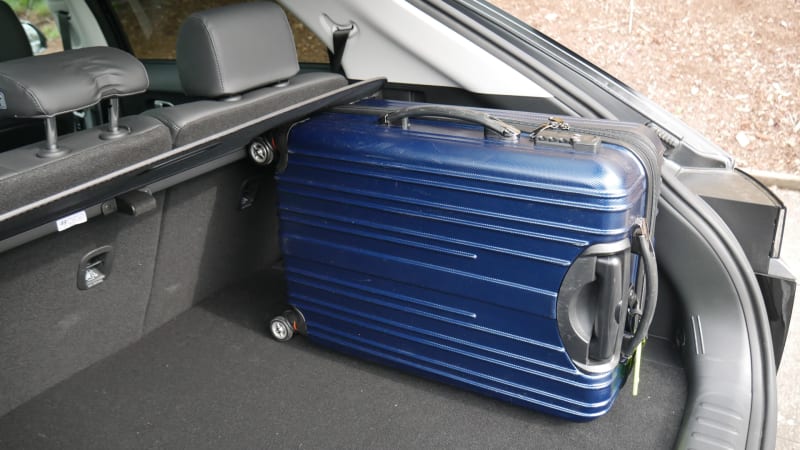
This is one of the bigger bags I use and it doesn’t come close to fitting under the cargo cover (a decent way to demonstrate cargo area height). As such, it extended beyond the liftgate angle. Note how raked the interior of the liftgate is as opposed to its boxy exterior.
As such, remembering to remove the cargo cover before you leave home will be important. But in case you forget, I always do this test first with the cover in place.
As in every luggage test I do, I use two midsize roller suitcases that would need to be checked in at the airport (26 inches long, 16 wide, 11 deep), two roll-aboard suitcases that just barely fit in the overhead (24L x 15W x 10D), and one smaller roll-aboard that fits easily (23L x 15W x 10D). I also include my wife’s fancy overnight bag just to spruce things up a bit (21L x 12W x 12D).
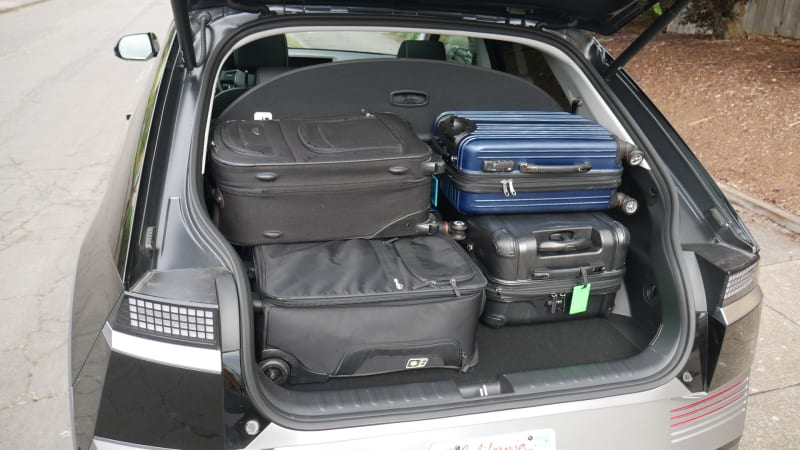
So all but the fancy bag fits, but as you can see, you have to flip up the cargo cover, which blocks most of your rearward vision. It also looks dorky.
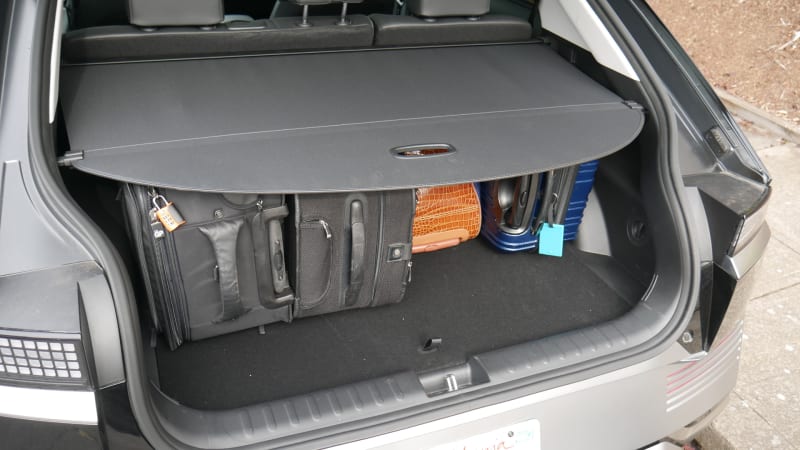
Alternatively, you could fit my four smallest bags with a lot of space left over for smaller items with the cargo cover in place. This is where I really started to notice that this is a weirdly sized and shaped space. I frequently ended up with a lot of space leftover that my bags couldn’t fill.
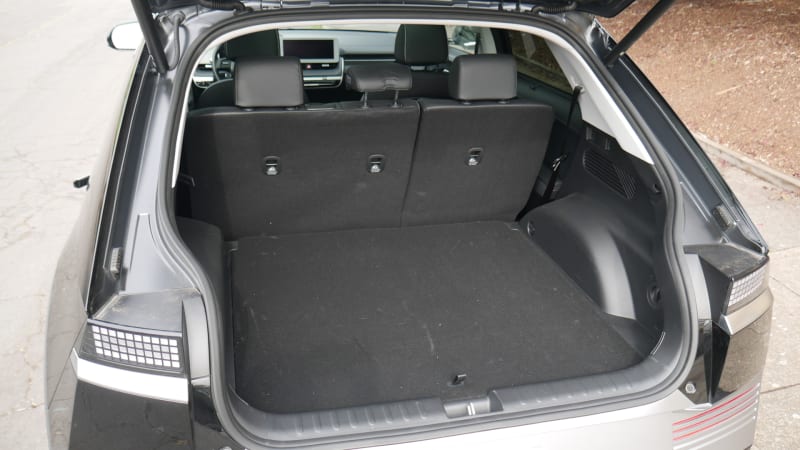
Alright, time to remove the cargo cover. Unfortunately, unlike some other Hyundai vehicles, there’s no place in the Ioniq 5 to store the cargo cover.
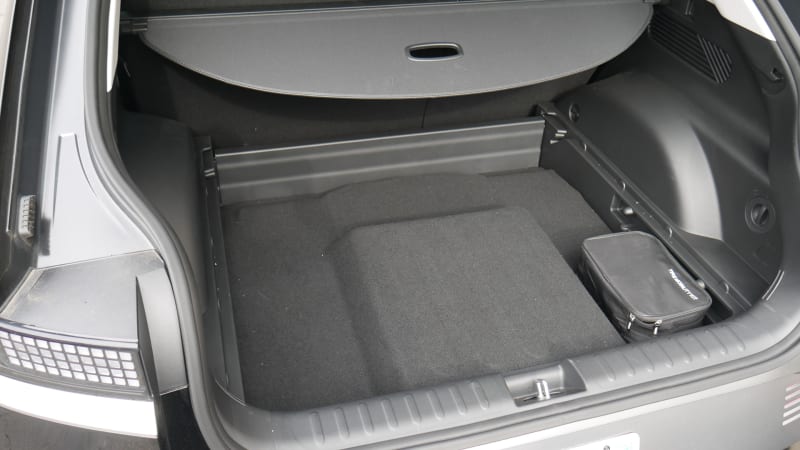
There’s a small amount of under-floor space, but nothing that would be particularly useful for this test. I suppose you could leave the floor off and gain some luggage space, but the very unflat floor would make for even more convoluted loading.
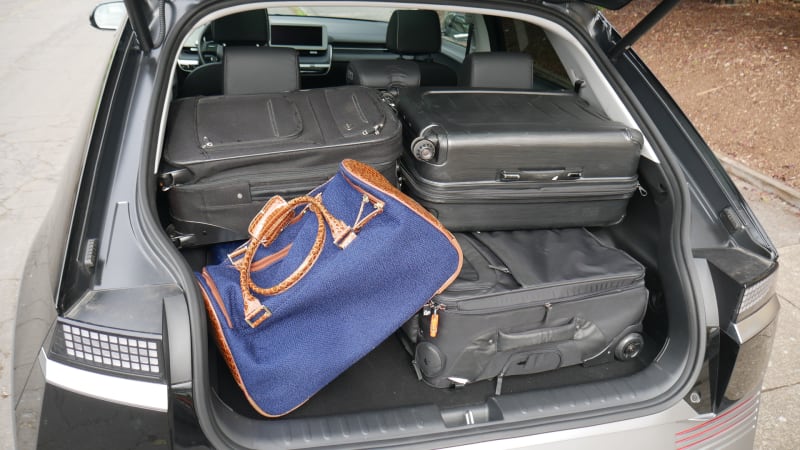
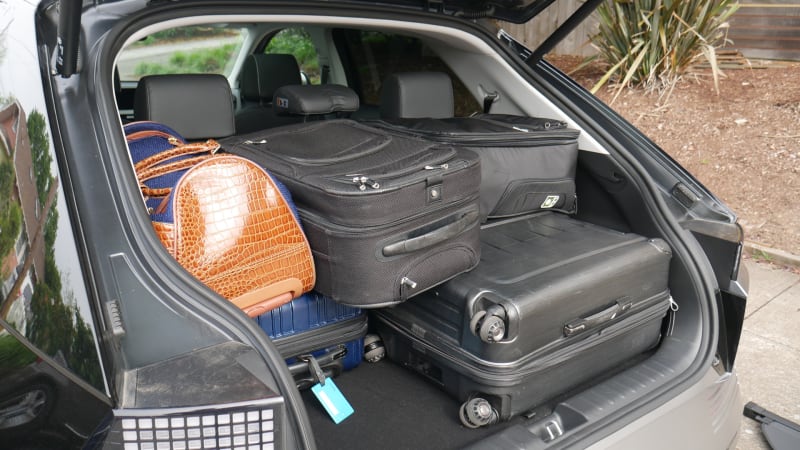
There just wasn’t a great way to fully utilize this space. Just when I thought I had it nicely Tetrised, the gate wouldn’t close. Basically, all the bags fit with some room left over, but it’s not easy to do.
By contrast, the same number of bags neatly and easily fit in the Mach-E, though I suppose there was less room left over. The EV6 was definitively better despite its lower cargo spec. The ID.4 is the king of the electric hill.
But wait! The Ioniq 5 has a trick up its sleeve. Or rather, in its back seat.
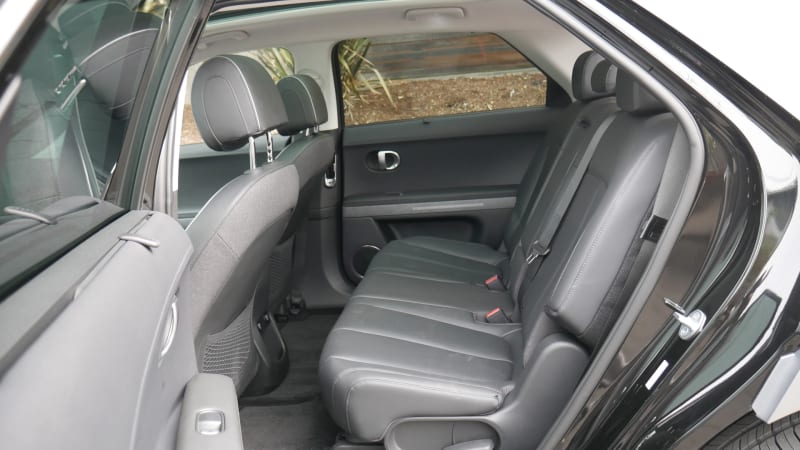

The back seat slides! The Ioniq 5 wheelbase is longer than a Palisade’s, which means it can slide the back seat forward for added cargo space and actually leave a decent amount of legroom.
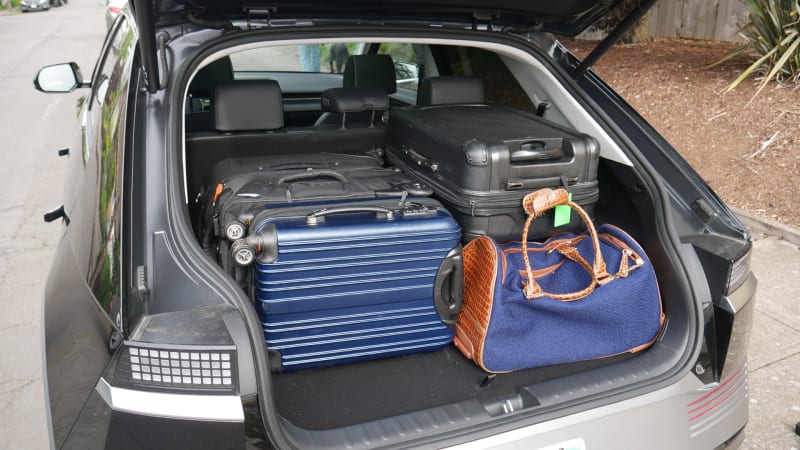
With the seat all the way forward, I was left with this nice and neat arrangement with room to spare. It makes me wonder: is this how the Ioniq 5 got its 27.7 cubic-foot number?
I’m guessing no, and that this is just one of those cargo areas where an awkward shape counteracts what is otherwise a sizeable volume.
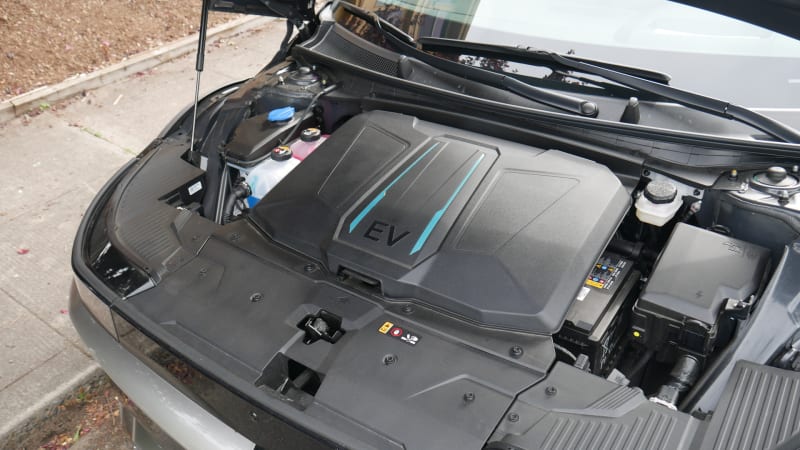
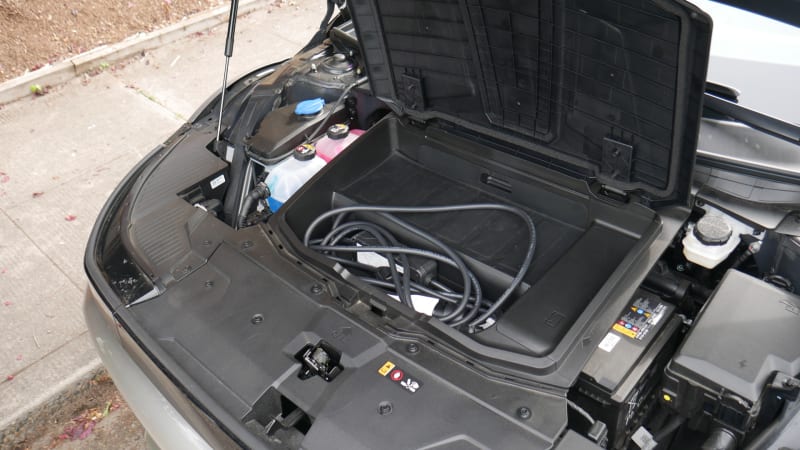
Oh, and there’s a frunk. Ish. Lift up the cover and there’s a space big enough for the charge cord and maybe a few books. Mobile library?
So yeah, that’s the Ioniq 5. Weird styling, weird cargo space.






